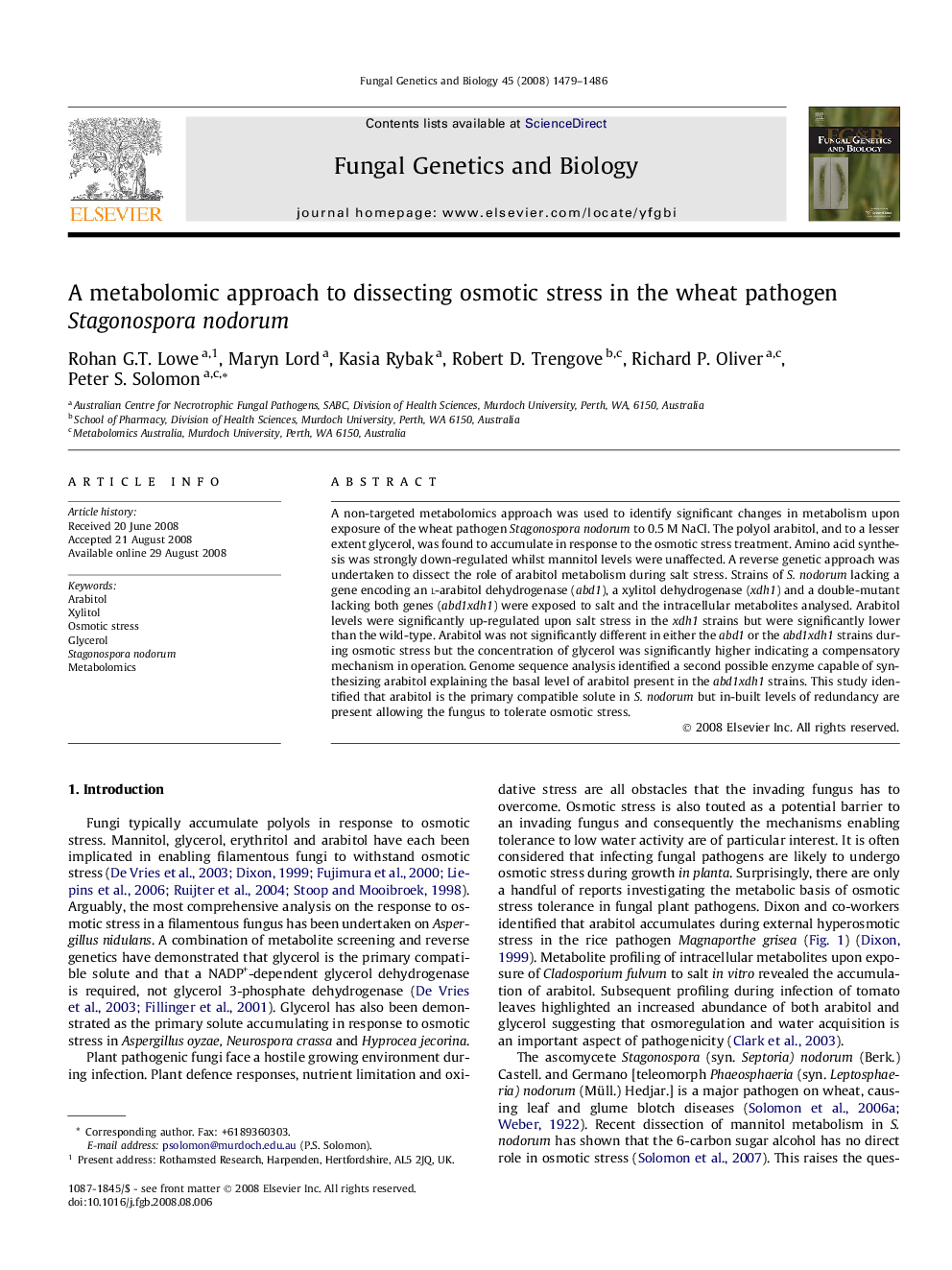| Article ID | Journal | Published Year | Pages | File Type |
|---|---|---|---|---|
| 2181392 | Fungal Genetics and Biology | 2008 | 8 Pages |
A non-targeted metabolomics approach was used to identify significant changes in metabolism upon exposure of the wheat pathogen Stagonospora nodorum to 0.5 M NaCl. The polyol arabitol, and to a lesser extent glycerol, was found to accumulate in response to the osmotic stress treatment. Amino acid synthesis was strongly down-regulated whilst mannitol levels were unaffected. A reverse genetic approach was undertaken to dissect the role of arabitol metabolism during salt stress. Strains of S. nodorum lacking a gene encoding an l-arabitol dehydrogenase (abd1), a xylitol dehydrogenase (xdh1) and a double-mutant lacking both genes (abd1xdh1) were exposed to salt and the intracellular metabolites analysed. Arabitol levels were significantly up-regulated upon salt stress in the xdh1 strains but were significantly lower than the wild-type. Arabitol was not significantly different in either the abd1 or the abd1xdh1 strains during osmotic stress but the concentration of glycerol was significantly higher indicating a compensatory mechanism in operation. Genome sequence analysis identified a second possible enzyme capable of synthesizing arabitol explaining the basal level of arabitol present in the abd1xdh1 strains. This study identified that arabitol is the primary compatible solute in S. nodorum but in-built levels of redundancy are present allowing the fungus to tolerate osmotic stress.
